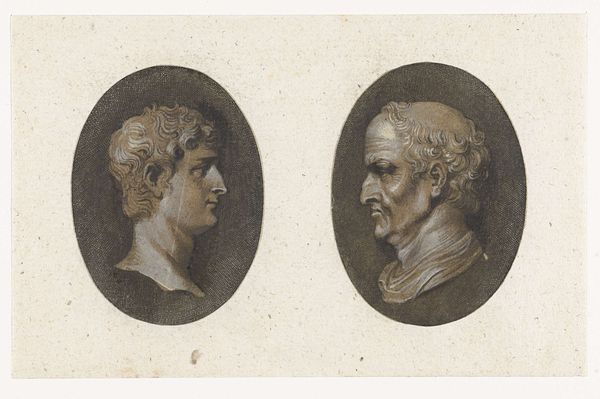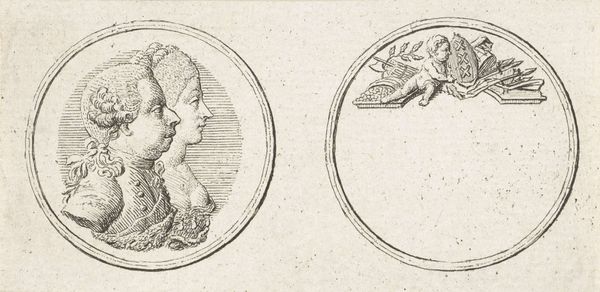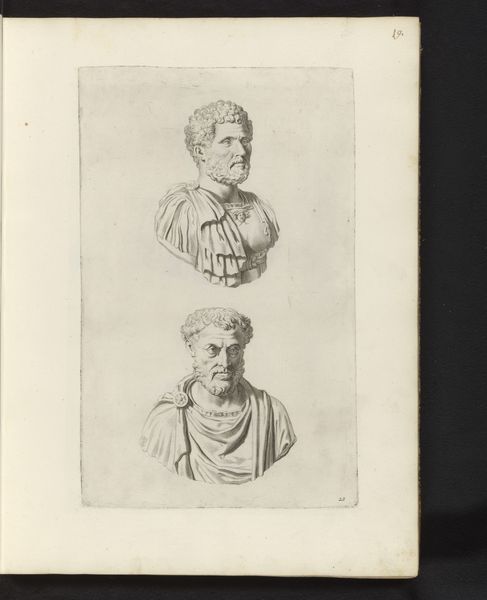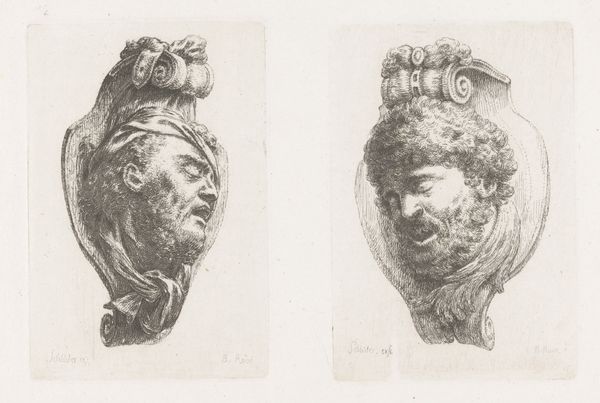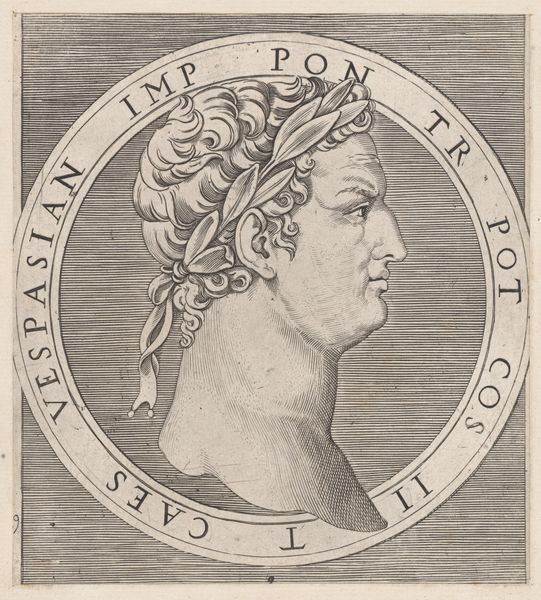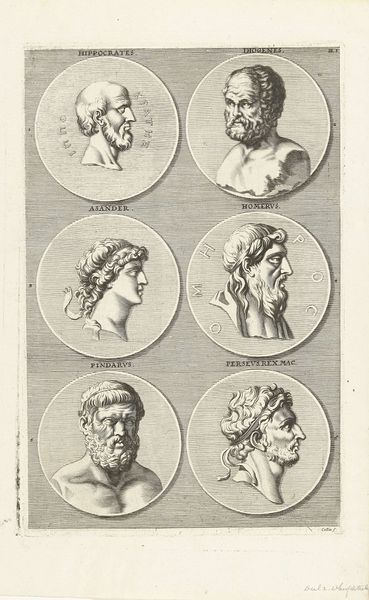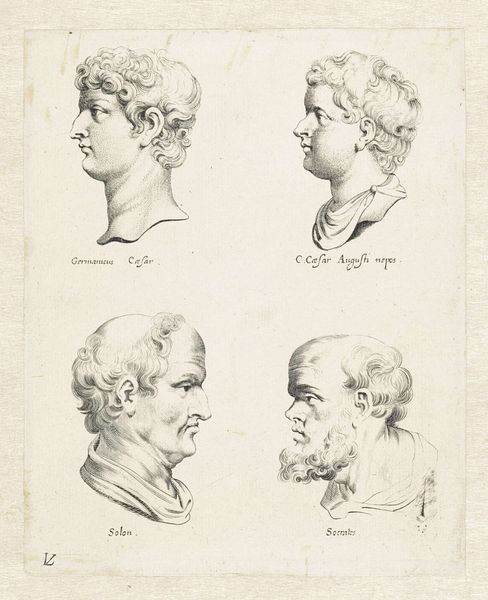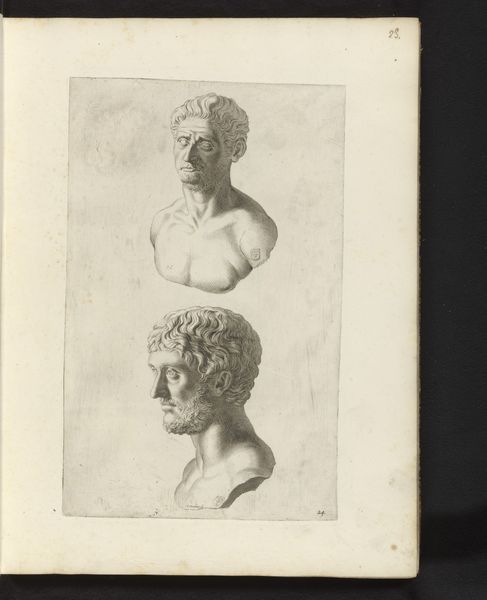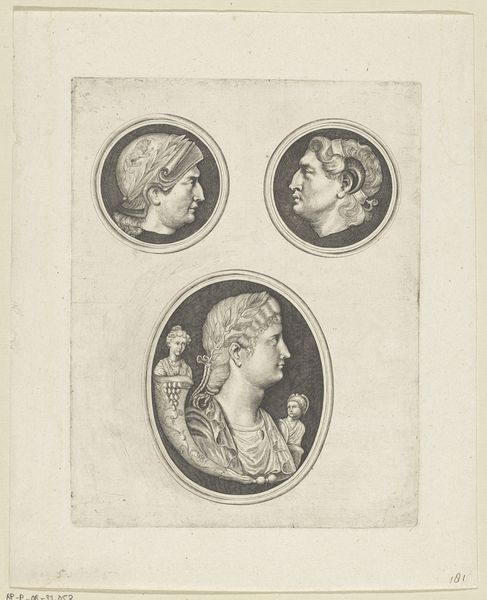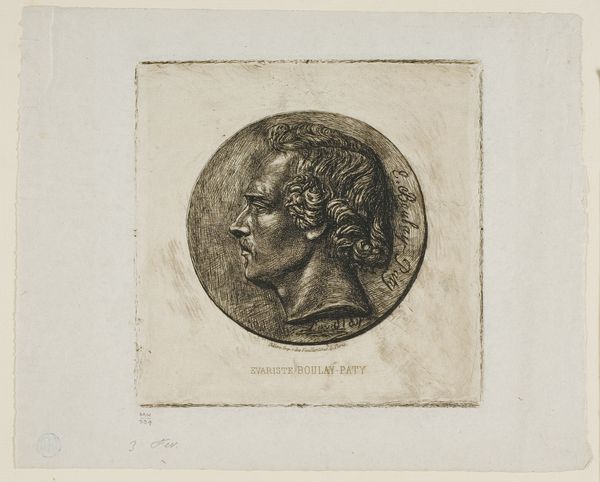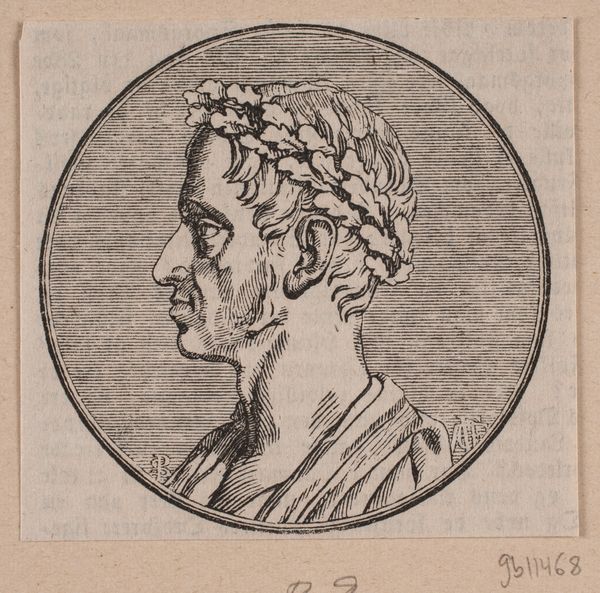
print, engraving
#
portrait
# print
#
old engraving style
#
classical-realism
#
ancient-mediterranean
#
history-painting
#
engraving
Dimensions: diameter 139 mm, diameter 139 mm
Copyright: Rijks Museum: Open Domain
These medallions depicting Roman emperors Vespasian and Domitian were rendered by Jan van Stalburch. Note the laurel wreaths adorning their heads. This symbol, deeply rooted in classical antiquity, signifies triumph and imperial power. The laurel wreath, associated with Apollo, was bestowed upon victors and rulers, a visual declaration of authority and divine favor. We see echoes of this motif across the ages, from ancient sculptures to Renaissance paintings, each time subtly shifting in meaning, yet always retaining its connection to prestige. Consider how, in the Renaissance, artists revived classical forms, imbuing them with new humanist ideals. The laurel wreath, thus, became a symbol not only of power but also of intellectual and artistic achievement. This reflects our collective memory, a continuous dialogue with the past. The reappearance of this symbol is not linear, but cyclical.
Comments
No comments
Be the first to comment and join the conversation on the ultimate creative platform.
